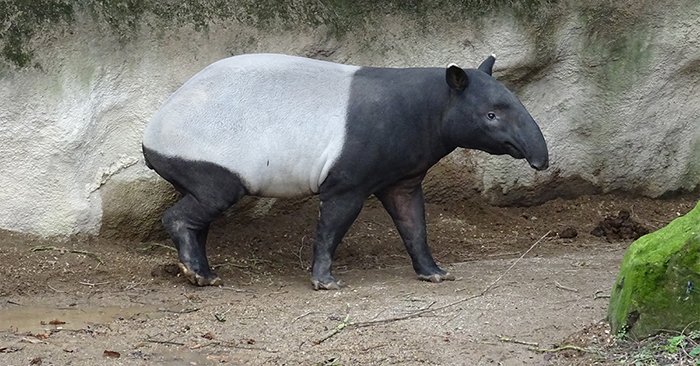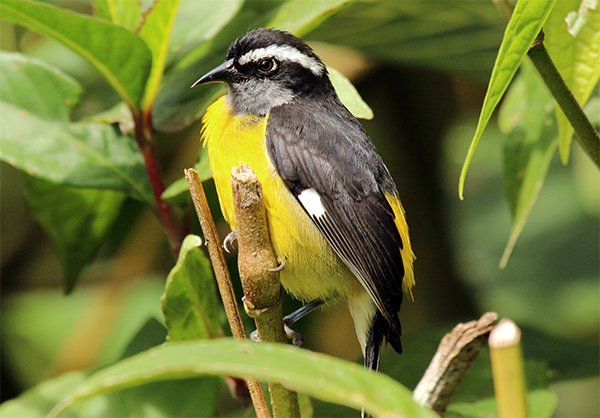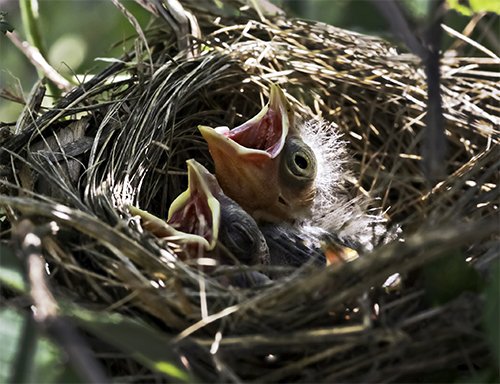Ask a Baraminologist: Tapirs and More!
Hey, kids, welcome back to our series “Ask a Baraminologist”! Please keep the questions coming. I will get to all of them as soon as I can. This week, we will be answering multiple questions with a worldwide animal theme.
Our first question comes from Kaleb who asks, “I’ve heard of the Malayan tapir. It is bigger than all other tapirs, weighing up to 1,150 lbs. Here is my question: Are they dangerous? Can they bite or kick?”
Good question, Kaleb! The Malayan tapir is similar to most other tapirs in preferring to run away from danger rather than fight. They do run fairly quickly, so they can often escape from predators (or overly friendly humans) simply by running away. Back one into a corner however, and you will find out that they have sharp teeth and a ferocious attitude. They have a nasty bite, and a charge from one of them would easily knock grown men from their feet.

Malayan Tapir
AgainErick, CC BY-SA 4.0, via Wikimedia Commons
Our next question comes from Juliet who asks, “Why don’t animals talk?”

Christopher Kuszajewski, CC0, via Wikimedia Commons
Parrots can imitate human words.
Great question, Juliet! It is true that animals do not talk (unless you count parrots’ ability to imitate human words). Researchers argue about this point. It is likely due to humans possessing a unique combination of genes, brain structure, and morphology that allows us to both produce words and understand their meaning simultaneously. This special faculty of man—his ability to both speak and comprehend the meaning of what is said—is likely part of the image of God that Genesis talks about. We know that God speaks in the way we do, yet none of the animals can. Therefore, it is likely that the ability to speak is unique to humans because we are made in God’s image and he is able to speak.
Our third question comes from Kaleb who asks, “I’d like some answers about a bird called the Bananaquit, including: How did this bird come about with such strange names?, What does it eat?, and finally, Does it live in the USA?”
Unfortunately, the bananaquit does not live in the United States. The closest populations are in southern Mexico, Haiti, and the Dominican Republic. However, a few have been spotted in south Florida. They have a wide dietary range, feeding on nectar, fruits (including bananas), and small invertebrates from time to time. Sometimes it will suck the juice from a fruit by poking a hole in the fruit with its bill. Right now, there is just one species of bananaquit, but there are an incredible 41 subspecies! So once scientists sort out the tangle, there likely will be a few more species split from the current species. As an aside, the bananaquit is in the same family as Darwin’s finches, family Thraupidae. It’s unclear exactly where the bananaquit got its name. Likely it has to do with its habit of feeding on ripe bananas.

Bananaquit
Charles J. Sharp, CC BY-SA 4.0, via Wikimedia Commons
Our final question comes from Juliet who asks, “What type of house do cardinals like to live in?”
Awesome question, Juliet! I am going to assume you mean the northern cardinal, the most well-known member of the family. However, there are fifty-three species of cardinals in family Cardinalidae, and many of them are not red! So feel free to write back if you want more information about other members of the family. The northern cardinal male and female work together on the nest. Females do most of the work, but males will contribute materials. The nest is surprisingly complicated, consisting of four layers. They will nest anywhere from 1 to 15 feet above ground. The nests are cup-shaped and made of grass, bark, twigs, leaves, and pine needles. Despite the teamwork, nests can take up to nine days to build! Eggs will be laid shortly thereafter. They do not tend to like bird houses, so if you want cardinals to nest in your yard, you’ll need to either already have, or ask your parents to plant, new trees or bushes that they like. Here is a list of places cardinals like to nest that a birdwatching site provided:

Cardinals
Atsme, CC BY-SA 4.0>, via Wikimedia Commons
- Pines
- Hawthorns
- Dogwoods
- Spruces
- Elms
- Sugar maples
- Red cedars
- Box elders
- Blackberry brambles
- Elderberry bushes
- Blueberry shrubs
- Spicebushes
- Hemlocks
- Honeysuckles
- Rose bushes1
I hope these answers help you and are a blessing to you. Please feel free to keep sending in the questions—I’ll get to them as soon as I can! If you have a question, ask your parents to help you submit it here.
Footnotes
- James Morgan, “Where do Cardinals Nest? [Nesting habits & facts],” Birdwatching Buzz, accessed August 10, 2022, https://birdwatchingbuzz.com/where-do-cardinals-nest/.
- © 2024 Answers in Genesis
- Privacy Policy
- Contact
- About
